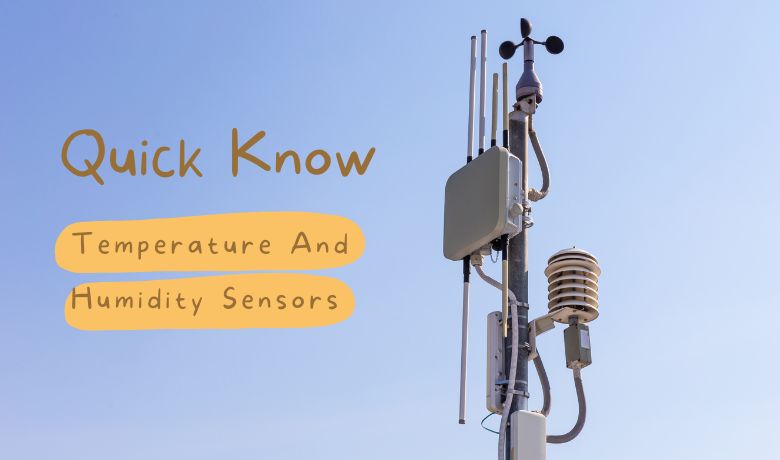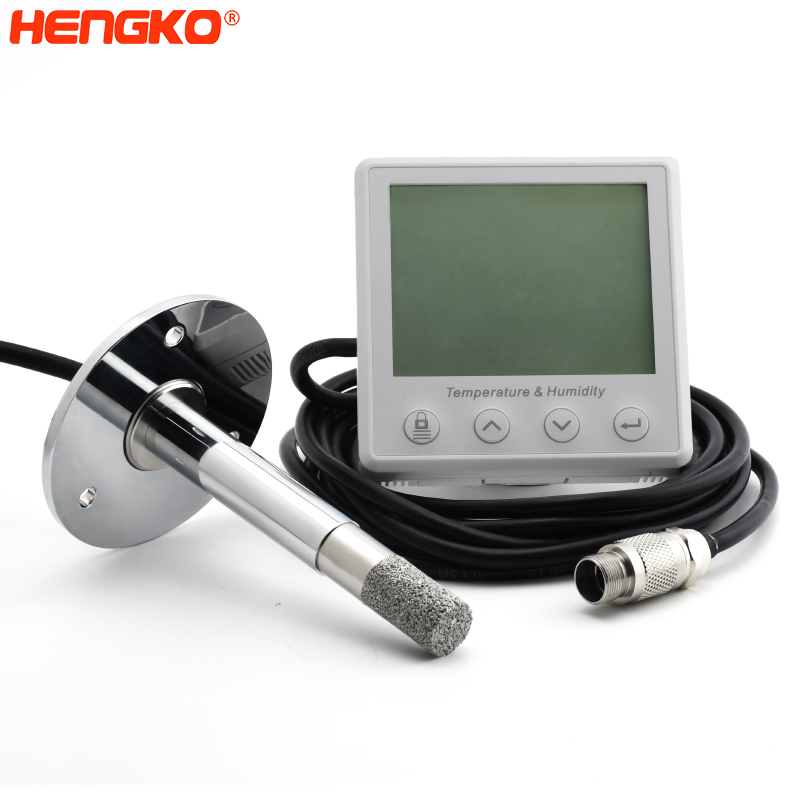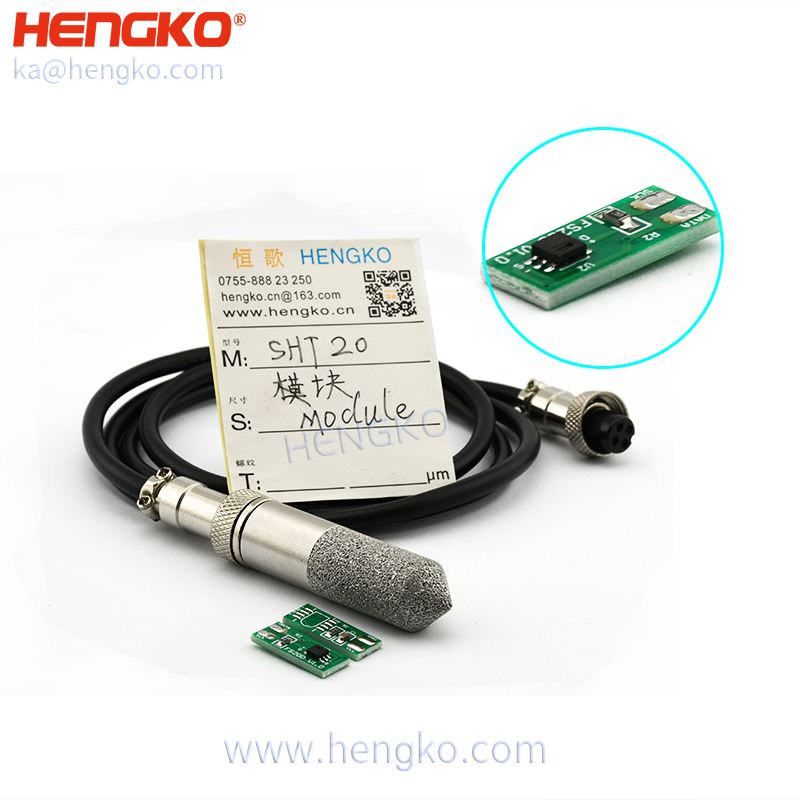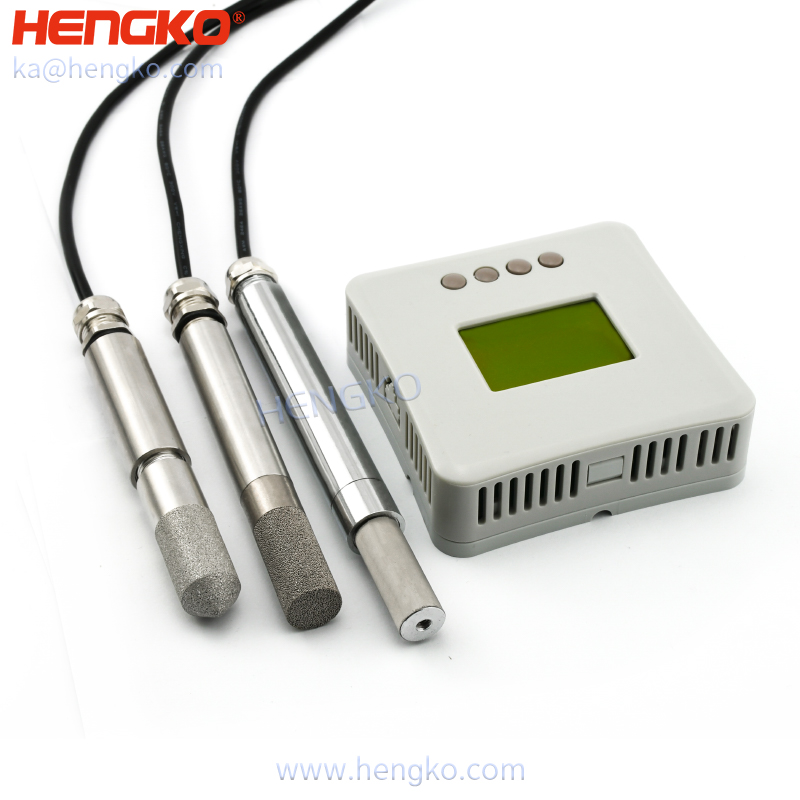
Have you Ever Wondered How Meteorologists Predict the Weather?
Or how your air conditioning system knows when to kick in?
The answer lies in the use of two fundamental sensors - temperature and humidity sensors .
These sensors are critical components in a myriad of applications, from home appliances to advanced weather forecasting systems.
So buckle up, as we take you on a quick yet thorough journey of understanding temperature and humidity sensors.
Everyone may no stranger to the temperature and humidity when it is mentioned. While we wake up in the morning, we turn on the forecast via our phone and see today’s temperature and humidity data. On the way to work, the temperature and humidity data also be displayed show scrolling in the subway station or the bus. So how can we measure these data? That must mention our temperature and humidity sensor.
Temperature and humidity sensor is equipment or device that can convert temperature and humidity into an electrical signal which can be easily measured and processed. The market’s temperature and humidity sensor usually used to measure temperature and relative humidity. Relative humidity refers to the humidity in the daily life, expressed as RH%. It is the percentage of the amount of water vapor (vapor pressure) contained in a gas (usually air) that is equal to the amount of saturated water vapor pressure (saturated vapor pressure) in the air.
The Science behind Temperature and Humidity Sensors
You might be wondering, how do these sensors work? Well, temperature sensors detect changes in physical characteristics of materials (like resistance or voltage) due to temperature changes and convert these changes into signals or data. On the other hand, humidity sensors measure the amount of water vapor in the air, a quantity that varies with temperature and pressure, and convert it into an electrical signal.
Different Types of Temperature Sensors
Understanding the different types of temperature sensors is key to knowing which one suits your needs best.
There are several types, but we'll focus on three main ones: 1. thermocouples, 2. Resistance 3.Temperature Detectors (RTDs), and 4. thermistors.
Thermocouples are made up of two different metal wires that generate a voltage proportional to temperature change. They are robust, low-cost, and cover a wide temperature range.
Resistance Temperature Detectors (RTDs) use the principle that the resistance of a metal wire increases with temperature. RTDs are highly accurate and stable over a wide temperature range.
Thermistors, similar to RTDs, change their resistance with temperature but are composed of ceramic or polymer instead of metal. They are highly sensitive and accurate over a limited temperature range.
Applications of Temperature and Humidity Sensors
From your local weather station to your smart home system, temperature and humidity sensors are everywhere.
In weather forecasting, these sensors provide accurate and real-time data about atmospheric conditions, leading to more accurate forecasts.
In home and building automation, they are integral for maintaining comfortable and healthy conditions, ensuring optimal temperature and humidity levels according to individual preference and need.
In industrial process control, these sensors help maintain optimal conditions for various processes, ensuring quality and efficiency.
How to Choose the Right Sensor for Your Needs
Choosing the right sensor might seem daunting, but it boils down to understanding three critical parameters - accuracy, range, and responsiveness.
Accuracy refers to how close the sensor's readings are to the actual value. Higher accuracy means more reliable readings.
Range is the spectrum of values the sensor can accurately measure. For example, a sensor designed for a cold environment won't work well in a hot one.
Responsiveness is how quickly the sensor can detect and respond to changes in temperature or humidity. Rapid responsiveness is crucial in applications where conditions change quickly.
Sometimes we will mention the dew point sensor in production. Dew point sensor, one of the temperature and humidity sensors, is a dew point meter. It is an instrument that can directly measure the dew point temperature. It is an air containing a certain amount of water vapor (absolute humidity). When the temperature drops to a certain level, the water vapor in it reaches saturation (saturation humidity) and begin to liquefy into water. This phenomenon is called condensation. The temperature at which water vapor begins to liquefy into water is called the dew point temperature for short.
And How to Collect the Temperature and Humidity Signals?
The temperature and humidity sensor mostly uses temperature and humidity one-piece probe as a temperature element to collect the temperature and humidity signals. After voltage stabilizing filter, operational amplification, nonlinear correction, V/I conversion, constant current and reverse protection and other circuits processing converted into a linear relationship with temperature and humidity current signal or voltage signal output, can also be directed through the main control chip 485 or 232 interface output. Temperature and humidity sensor probe housing play an important role in the chip protection. To measure soil temperature and humidity, a probe is inserted into the soil to measure. By this time the waterproof and dustproof ability of probe housing becomes essential.
HENGKO temperature and humidity sensor housing is sturdy and durable, safe and effective protection of PCB module from damage, dustproof, anti-corrosion, IP65 waterproof grade, more effectively protect humidity sensor modules from dust, particulate pollution, and oxidation of most chemicals, to ensure its long-term steady work, close to the sensor theory life. We also add waterproof glue to PCB module and more effectively prevent water from infiltrating into the PCB module causing damage.It can be used in all kinds of high humidity measurement
With the development of technology, the industry for temperature and humidity sensor requirements are increasingly high. HENGKO has 10 years of OEM/ODM customized experiences and collaborative design/ aided design ability. Our professional design team can provide technical support for your high standards. We have more than 100,000 product sizes, specifications and types for your select, customized processing of a variety of complex structures of the filter products also available. Welcome to contact us for further information.
Conclusion
Understanding temperature and humidity sensors is not as complicated as it may seem. These little devices play an enormous role in our daily lives and in various industries. Whether it's determining the day's weather or ensuring a comfortable home environment, these sensors make it all possible. Now that you're equipped with this knowledge, you're one step closer to choosing the perfect sensor for your needs.
FAQs
1. What is the main difference between temperature and humidity sensors?
Temperature sensors measure the heat intensity, while humidity sensors determine the amount of water vapor in the air.
2. Are there other types of temperature and humidity sensors aside from the ones mentioned?
Yes, there are various other types of sensors, such as infrared temperature sensors, and psychrometers for humidity.
The best choice depends on your specific application and requirements.
3. How do I maintain my temperature and humidity sensors?
Regular calibration is vital to ensure accurate readings. Also, keep the sensors clean and protect them from extreme conditions beyond their capacity.
4. Where can I purchase these sensors?
You can buy Temperature and Humidity sensors from electronic stores, online marketplaces, or directly from the manufacturers, like HENGKO, contact us
by email ka@hengko.com, let us know your requirements.
5. Can I use temperature and humidity sensors in my DIY projects?
Absolutely! These sensors are widely used in DIY electronics and home automation projects. They come in modules that are easy to interface with microcontrollers like Arduino.
If you have any more questions, need more information about temperature and humidity sensors, or require professional advice,
do not hesitate to reach out. Contact HENGKO at ka@hengko.com today!
We're here to provide all the support you need. Let's make your next project a success together.
Post time: Aug-24-2020








